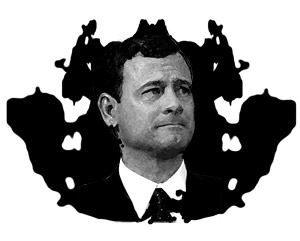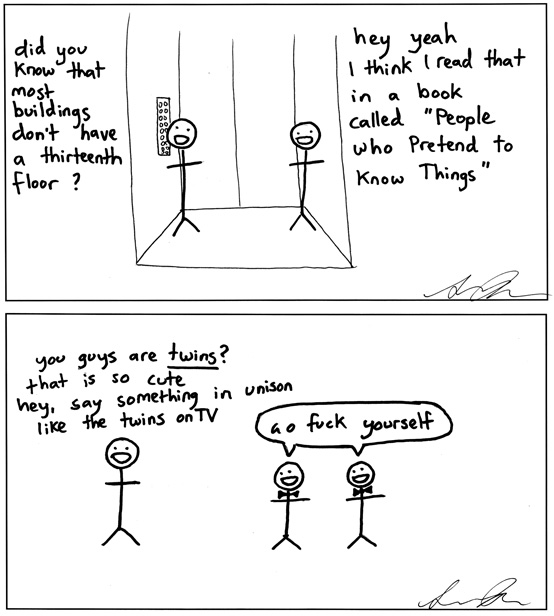|
|

|
John Roberts added to Rorschach inkblot test APA: 'Your take on him says more about you than it does about him' by Ryan B. Martinez, Associate Editor
|
 | | Gaze not into the abyss, lest it gaze into you. |
WASHINGTON, D.C. — Citing his ambiguous politics and inscrutable soul, the American Psychological Association has added the image of John Roberts, the current nominee for chief justice of the United States, to the Rorschach inkblot test.
The test, developed by a Swiss psychologist, has been used in Freudian psychoanalysis since the early twentieth century. Psychologists flash one of 10 inkblots — random, abstract black shapes on white backgrounds — and patients tell what they see.
"Each of the inkblots are inherently meaningless, designed to coax the patient to project his or her hopes and fears onto them," said APA President Ronald F. Levant at a press conference Wednesday. "For years, we've been looking for another card to add to the test, one whose stark blankness would render guileless the most self-aware of subjects."
He added: "Ladies and gentlemen, we have found it in John Roberts."
Roberts, who was nominated as associate justice by President Bush in July and later re-nominated to replace the late Chief Justice William Rehnquist, has baffled political commentators for months.
His brief career on the D.C. Circuit Court of Appeals, his contradictory political statements and his vacant blue-green eyes — which never stay the same color for long — have created fissions within political groups, both conservative and liberal.
"Frankly, I don't trust him," said Danielle Drake, a Washington lobbyist for Planned Parenthood. "In 1991, acting as a lawyer, he stood before the Supreme Court and said Roe v. Wade should be overruled. But Gina, the secretary of Planned Parenthood, trusts him based on his 2003 statement that he wouldn't touch Roe v. Wade."
She continued: "And then our vice president suspects he's a pro-choicer secretly infiltrating the system, while our head of human resources says that, when she catches him on TV, she can only see a twig and two apples balancing on the hood of a melting car. Clearly, we have to work on reaching a consensus."
The APA believes the wide divergence of political interpretations will translate psychologically. In an unusually concise statement, Roberts himself responded to the APA's announcement at a press conference whose time, date and place no one seems to be able to remember.
"The decision to include me among this set of non-anthropomorphic images is predicated on the assumption that the political insights derived from comments made about my past statements are comparable to the psychological insights derived from comments made about the amorphous inkblots," Roberts said.
"What the APA fails to realize is that what is politically ambiguous, and what is morphologically ambiguous, are not necessarily the same; in fact, even when there is no disanalogy, and the political and morphological ambiguities converge, that does not mean they are also not logically clear and unambiguous, given a set of precedents by which to understand them."
When asked if that means he dissents with the APA's decision, he replied: "Well, I didn't say that."
 |
 |
| « Back to the September 2005 issue |
 |
|
|

|
|

